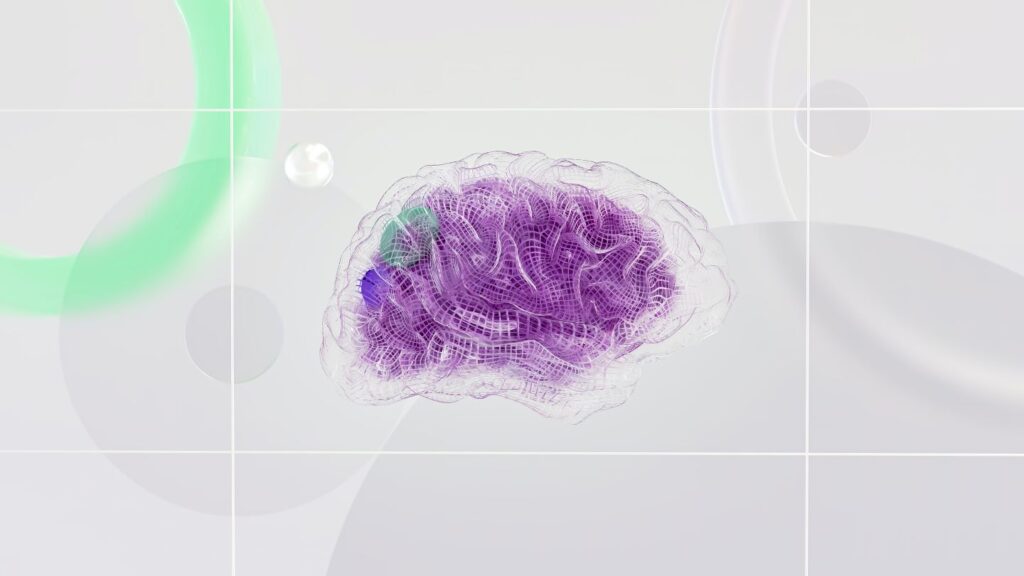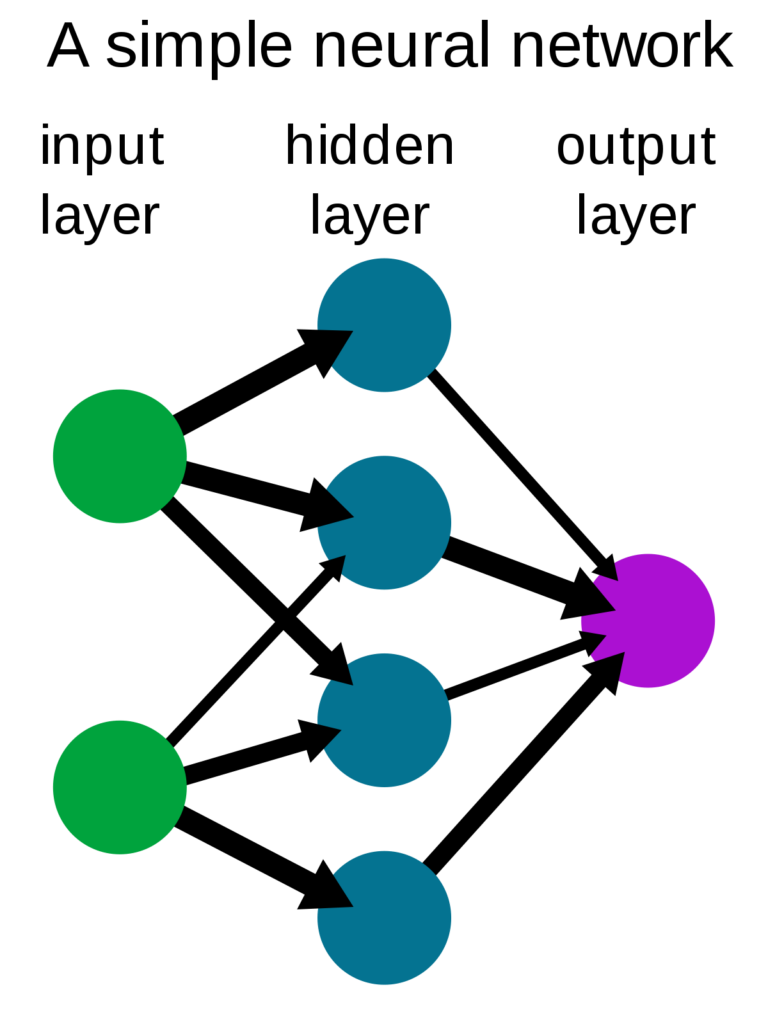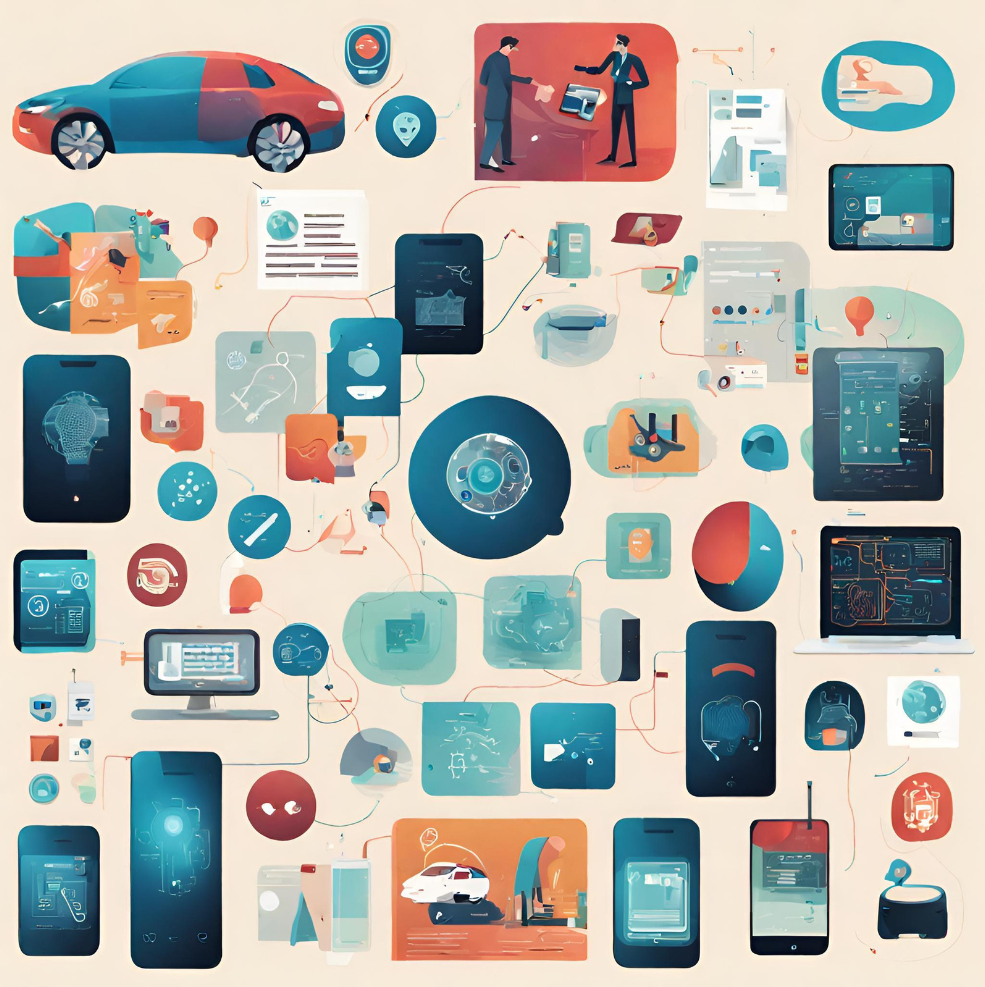
What Is Deep Learning?
Imagine your brain as a city full of bustling intersections where information meets, merges, and then sets off on new paths. Deep learning aims to build a virtual version of this city, but for computers. At its core, it’s a piece of the larger machine learning world, almost like a specialized department within a company. While machine learning teaches computers to learn from data, deep learning takes it a step further.
It teaches computers to solve puzzles so complicated that even humans might scratch their heads. Think of it as training a computer to be a detective who can solve a mystery by piecing together tiny clues from a mountain of evidence.
The Evolution: From Machine Learning to Deep Learning
Deep learning’s ascendancy isn’t accidental. Traditional machine learning algorithms reached a plateau when it came to processing complex data. They needed explicit guidance from human operators and were ill-suited for tasks like image recognition or natural language understanding. Deep learning, with its ability to process layered and abstract data automatically, became the solution.
Historical Context: The work of Geoffrey Hinton, Yann LeCun, and Yoshua Bengio, among others, has been instrumental in the rise of deep learning. Their research in the early 2000s provided the foundational algorithms and methodologies that made deep learning what it is today
Deep Learning vs. The Human Mind
While it’s tempting to equate deep learning with the capabilities of the human brain, significant differences exist. Unlike humans, who can understand concepts from a few examples, deep learning algorithms often require millions of examples to perform a similar task. But once trained, these algorithms can sometimes outperform humans in tasks like recognizing thousands of objects within images.
Counterarguments: Recent research in “few-shot learning” aims to train deep learning algorithms to understand concepts with fewer examples, challenging the notion that vast datasets are always necessary.
The Impact So Far
Deep learning’s impact isn’t just academic; it’s profoundly pragmatic. Whether it’s voice-activated TV remotes, email filtering, or real-time language translation, deep learning is at the heart of many technologies we use daily. For instance, state-of-the-art deep learning models now surpass human abilities in tasks like object recognition in images and even language translation.
Examples: Real-world applications like DeepMind’s AlphaGo defeating world champions in Go, or the use of deep learning in medical diagnostics to identify early-stage cancers, offer concrete examples of its transformative power
This is just the tip of the iceberg, and we’re just getting started in understanding what deep learning can do. So how does it manage these feats?
How Does Deep Learning Work?

The Building Blocks: Artificial Neurons and Layers
To understand deep learning, we first need to understand its smallest unit: the artificial neuron. Similar to biological neurons in the human brain, an artificial neuron takes multiple inputs, processes them, and produces an output. These neurons are organized into layers: input layers, hidden layers, and output layers.
The “deep” in deep learning refers to the multiple hidden layers between the input and output layers, facilitating the algorithm’s capability to learn from the data in a “deep” way. As data pass through these layers, the neural network learns to transform the input data into a format that makes it easier for the output layer to interpret.
The Process: Feedforward and Backpropagation
The training of a deep learning model involves two main processes: feedforward and backpropagation.
- Feedforward: During this phase, the input is passed through the network layer by layer until it reaches the output layer. Each layer applies its own transformations (like adding weights or applying activation functions).
- Backpropagation: Once the output is produced, the algorithm measures how far off this output is from the desired result. This ‘error’ is then fed back through the network in the opposite direction. Each layer adjusts its parameters to minimize the error. This process is done iteratively, often over millions of cycles, to train the network.
The Mathematics: Don’t Be Scared!
While the mathematics behind backpropagation can seem intimidating, the essence is simple: the algorithm adjusts itself by learning from its mistakes, much like how a child learns to ride a bike.
Computational Challenges
Training a deep learning model can be resource-intensive. The requirement for large datasets and the computational cost of backpropagation through multiple layers can make deep learning expensive and time-consuming. However, advances in hardware, particularly Graphics Processing Units (GPUs), have considerably accelerated this process.
Understanding the fundamentals of how deep learning works helps in appreciating the various applications it powers. These aren’t just algorithms; they are algorithms that learn, adapt, and potentially think.
Applications of Deep Learning
Image Recognition: More Than Meets the Eye
One of the most straightforward yet groundbreaking applications of deep learning is image recognition. When you upload a photo on social media and it automatically tags your friends, or when your smartphone camera identifies a face in the frame, you’re experiencing deep learning in action. Convolutional Neural Networks (CNNs), a particular type of deep learning model, excel at this task by effectively identifying different hierarchies of features in an image.
The Language of Machines: Natural Language Processing
Natural Language Processing (NLP) is another domain where deep learning shines. Ever wondered how chatbots understand and generate human-like responses? Or how tools like Google Translate have become eerily accurate? Recurrent Neural Networks (RNNs) and their more advanced cousins, Long Short-Term Memory (LSTM) networks, enable machines to understand and even produce human language in a contextual manner.

Sound and Fury: Speech Recognition
Deep learning has also taken speech recognition to a whole new level. Voice assistants like Siri, Alexa, and Google Assistant can understand and respond to a plethora of accents and dialects thanks to deep learning. Specifically, deep learning techniques like Recurrent Neural Networks (RNNs) and Convolutional Neural Networks (CNNs) are used to analyze audio data. These algorithms can identify patterns and sequences in spoken language, making them highly efficient at understanding different accents, dialects, and even noisy backgrounds.
Personalized Recommendations: Your Virtual Shopper
If you’ve ever been surprised at how well an online platform seems to “know” your tastes, thank deep learning. Whether suggesting a movie on Netflix or recommending a product on Amazon, deep learning algorithms analyze your past behavior to predict what might interest you in the future.
The Future is Now: Self-Driving Cars
Deep learning is one of the critical technologies behind self-driving cars. It allows the vehicle to make sense of its environment, identifying other vehicles, pedestrians, and various obstacles. As the technology matures, the hope is that self-driving cars will become safer and more reliable than human-driven ones.
Medical Advancements: AI-Powered Diagnostics
In the medical field, deep learning can identify patterns and anomalies in various types of data, including X-rays, MRI scans, and even genomic sequences, potentially diagnosing diseases earlier and more accurately than traditional methods.
The applications of deep learning are both numerous and awe-inspiring, driving efficiencies and enabling new capabilities across industries.
Benefits, Challenges, and the Future of Deep Learning
The Upsides: Why Deep Learning Matters
Complexity? No Problem
Deep learning models excel at understanding intricate structures within large datasets. Whether it’s recognizing subtle nuances in human language or identifying a rare bird species in a dense forest, the capability to discern complex patterns sets deep learning apart.
Scalability: Bigger is Better
Another advantage is scalability. As the dataset grows, deep learning models often improve in accuracy and efficiency. In an era where data is ever-increasing, this is a significant asset.
Accuracy: State-of-the-Art Results
Whether it’s beating human champions at board games or surpassing traditional methods in medical diagnosis, deep learning models have consistently achieved state-of-the-art results in various fields.
The Downsides: Not All That Glitters Is Gold

Computational Costs
As powerful as they are, deep learning models require a significant amount of computational power. This can translate into high monetary costs and energy usage. Additionally, the environmental impact of these computational costs is becoming a subject of increasing concern. The energy required to train large models can contribute to carbon emissions, making it crucial to explore more energy-efficient algorithms and hardware.
Data Dependency
Deep learning models need massive labeled datasets for training. Acquiring such datasets can be a challenge, especially in fields where data is sensitive or scarce.
Overfitting: A Double-Edged Sword
The same complexity that allows deep learning models to excel can also lead to overfitting. An overfit model performs exceptionally well on its training data but struggles with new, unseen data.
The Road Ahead: What’s Next for Deep Learning?
The future of deep learning is rife with possibilities. With advancements in hardware and algorithms, we can expect even more efficient and versatile models. Here are some avenues where deep learning could make a significant impact:
- Environmental Conservation: From tracking endangered species to analyzing climate data, deep learning could be pivotal in saving our planet.
- Personalized Education: Imagine a learning environment tailored to the individual needs and learning styles of each student. Deep learning could make this a reality.
- Human-AI Collaboration in Creative Fields: Whether it’s writing a screenplay or composing a symphony, AI could become a creative partner rather than just a tool.
- Ethical and Responsible AI: As AI becomes more ingrained in our lives, creating ethical and transparent algorithms is crucial. Current efforts in the field are focused on developing techniques for “explainable AI,” which allows for a better understanding of how these complex algorithms make decisions. Also, initiatives like the AI Ethics Guidelines put forth by various organizations aim to ensure that AI is developed and deployed in a manner that is ethical, transparent, and accountable. More research is underway to ensure that deep learning algorithms do not perpetuate societal biases or discriminate against specific groups.
Deep learning is more than just a technological trend; it’s a transformative force that’s reshaping how we live, work, and think. Despite the challenges, its potential to benefit humanity is immense.
Conclusion
Deep learning is an extraordinary field that has already profoundly impacted various aspects of human life. Its powerful capabilities for pattern recognition, scalability, and accuracy make it an invaluable tool for solving complex problems. However, the road to fully realizing its potential is fraught with challenges, from computational and data requirements to ethical considerations.
The future is promising, and as technology advances, we can only anticipate more groundbreaking applications that will change our world in ways we can only begin to imagine.
And so, as we stand on the cusp of this technological revolution, it’s not just about what deep learning can do; it’s about what we will choose to do with it.




